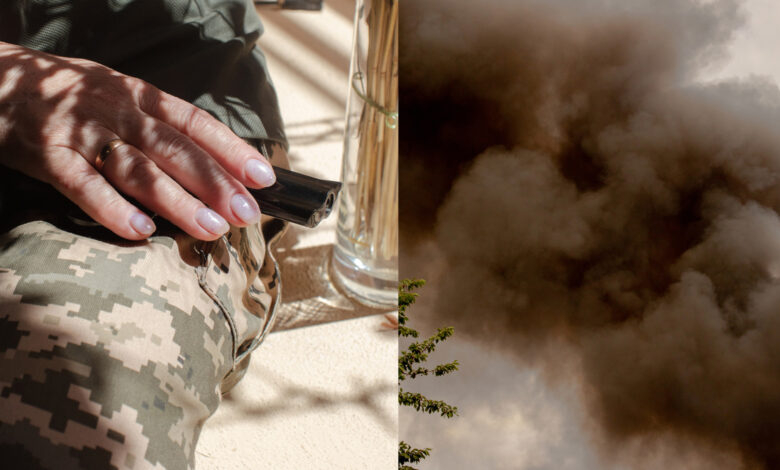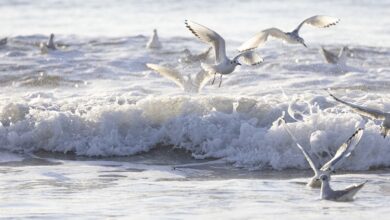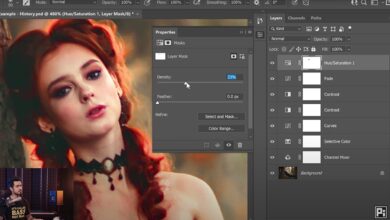5 Business Tips for Becoming a Photojournalist

Making a living as a photojournalist isn’t what it used to be. But it is still possible to make a living.
For those who don’t know, Natalie Keyssar is a Canon explorer of light who works primarily in the world of photojournalism. Based in Brooklyn, NY, her work focuses on the personal effects of political turmoil and conflict, youth culture, and migration. Her work has been supported by the Pulitzer Center, the Magnum Foundation, the National Geographic Society, and the IWMF, among others. In short, she knows what she’s talking about. And when I had the chance to sit down with her online, she sent me a list of topics to choose from. So instead of picking one, I asked her to pick them all, and she happily obliged. So this online conversation ended up splitting into two parts. One part was about the business of photojournalism, and the other part was about Tips for better storytelling. But what I love about this conversation is that Natalie doesn’t consider herself a business expert. She’s simply been in the industry long enough that she understands what works and what doesn’t work for her. To me, that’s more valuable than someone who claims to have it all figured out but just happens to no longer practice the subject they claim to understand.

Sponsorships and Contests
To start, Natalie talks about the importance of applying for grants and competitions. With grants, the application process can be intense and heartbreaking. Because even though the photojournalism industry is smaller overall, the number of people who want to make a living is still high. So the competition for grants or awards is high. But Natalie explains that even the editing and application process is great just to learn how to present your best work. And even if you don’t win, you’re still getting your work in front of decision makers. This means that simply applying can help you stand out in future grant applications or presentations (more on presentations later). However, even the process of finding grants to apply for can be a daunting task. So Natalie mentioned a resource called Imageis a platform that hosts various grant and contest submissions. When it comes to contests, they are not only a great way to get your name out there (if you win), but they are also a great place to look for inspiration, as it is helpful to see what types of images are winning and what types of work and stories are being celebrated. I feel this is important not only to see if your work is on par with the winning images, but also to see how you can differentiate yourself and create work that is different from what is currently popular.
Throw the ball
Natalie started this conversation by saying that pitching is one of the most underrated ways to promote yourself and get your name in front of important people. Not only that, but she also says it’s one of the best ways to steer your career in the direction you want it to go. Because instead of waiting for the phone to ring or applying to the “right” jobs, you get to choose your story and determine what kind of work you’ll be known for. Editors are generally overworked, too, so giving them an idea that’s already worked out in every detail takes some of the load off their shoulders. So if your pitch gets picked up, you’ve now established what kind of work you’ll be known for. But even if your pitch doesn’t get picked up, the process still shows editors what kind of work you’re truly passionate about. So even though you may be hired for other types of jobs, they still associate you with the type of jobs you’re interested in. So if those types of jobs come up, you’ll be the first name that comes to mind.

How to negotiate prices
One of the hardest parts of any industry is learning how to price yourself. And Natalie makes a really great point about not always wanting to be “the lowest price.” While having the lowest price might help you land a few jobs, in general this approach cheapens the industry and makes clients think that good photography is cheap. This causes photographers to work harder and longer for less pay. Here, Natalie shares some industry standards for day rates, such as around $500 for a national newspaper article, and shares that there are some great ways to make money outside of day rates. This can come in the form of additional compensation for things like travel, equipment rentals (which you can rent yourself), research, post-production, etc. When it comes to licensing, Natalie suggests tools like Getty Image Calculator to get an idea of what the industry standard is. One of the most important tips I gleaned from this section is to always let the client give you their budget first and then always try to get more because most people never actually start negotiating at their maximum budget.
Self-promotion is one of the best ways to get your name in front of important people. But it can also feel like a daunting and intimidating task. Here, Natalie explains that her process is a little different than her fellow panelist, Daniella Zalcman. Danielle, on the other hand, prefers sending out prints, cards, and other thoughtful materials. Natalie prefers the simple act of sharing on social media and sending out referrals. As we’ve discussed before, referrals are a great way to not only land potential jobs, but also get your name and interests in front of decision makers. Natalie is also really passionate about the stories she works on, so just the simple act of sharing and talking about and sharing those stories is a great way to demonstrate your passion for what you do.
Select collaborators
When I think of collaborators these days, I think of the process of creating a collab post on Instagram. But for this section, Natalie is talking about finding your audience and understanding your market. Know what kind of story you want to tell, whether it’s a short story or a long-term project, do you want to be in the celebrity and pop culture space? Or do you want to tell stories focused on the food industry? Basically, you want to find the niche that interests you and from there, find people who are a good fit for you. Are there editors in your market who gravitate toward your style that you can focus your pitches on? You can also partner with peers in the same space and bounce ideas off of them. The idea here is to build a sort of Rolodex of key people in your market that you want to collaborate with.

Conclusion
Anything related to business is a complex subject, and each of these topics could easily become an all-day class. But these little gems are gold and can at least get you on the right track. For me, the most memorable takeaway was the power of pitching. While you won’t always get a yes, just the act of putting your ideas on paper and out into the world can be beneficial to your career. If you have any moments of insight from this conversation, I’d love to hear them in the comments. And if this topic interests you, it might be worth checking out. more from Natalie.




